People and Culture
POPULATION TRENDS Size of population is an important characteristic of any country. It determines the number of houses, schools, and hospitals; the size of the labor force; and the amount of food and water it is likely to need. The total population of Jamaica in July 2003 was an estimated 2.7 million, with an annual […]
People and Culture
Geography and history formed the crucible from which Chile was born. In the twentieth century, the country survived dictatorships and social upheavals to become a model of democracy in Latin America. Today, the vitality of its people and culture heighten the world's respect for this small nation even more. POPULATION Chile's 15.7 million people are […]
People and Culture
Cuba has the largest population among Caribbean countries, nearly 11.5 million inhabitants. The island's population is highly urbanized, with 76 percent of the people living in cities. With so many people in cities, rural areas are sparsely settled. Like two poles of a magnet, Cuba's population is concentrated on opposite ends of the island. Thirty-eight […]
People and Culture
Nearly 10 million people call the Dominican Republic home. Most of them are of mixed European and African ancestry. Most Dominicans live in cities, although much of the country's rural landscape is densely packed. In this chapter you will learn about the Dominican people. You will get a glimpse of their demographics (demography is the […]
The Aboriginals: The Oldest Culture
The Australian deserts also harbor one of the most remarkable, desertadapted cultures, the Australian aboriginals. They adapted to the harsh conditions and their long isolation with a culture sparing in the use of tools but rich in philosophy and cultural adjustments to desert conditions. Moreover, their long isolation from other human cultures has made them […]
AUSTRALIAN CULTURE—THE NATIONAL OXYMORON?
Anybody who goes to an art gallery is a wanker, right? There are 3.6 million wankers in Australia. Only geeks go to libraries, so this country has 5.4 million geeks. Dance performances are for poofs and fag-hags, and now we know Australia has 1.6 million people like that. Outside of school projects, you wouldn't go […]
Poland: People and Culture
The chapter on the people of Poland and their culture (way of life) serves as the main focus in the review of this modern world nation. To this point, we have covered the physical landscapes and historical geography of Poland. Here, the emphasis is on what people are doing and why, as well as the […]
Irish People and Culture
Fado, fado, Ireland was populated by people from the Eurasian landmass. Racially, the Irish are linked to Western Europe and Scandinavia. The Celtic culture came to envelop Ireland during the years of Celtic domination. Saint Patrick and Christian missionaries brought the Catholic religion to Ireland. Vikings intermarried with the Irish resulting in some genetic changes. […]
Ireland: Culture History and Cultural Landscape
Fado, fado, with the end of the Ice Age, 12,000 years ago, the glaciers retreated. They left Ireland covered with glacial debris and tundra vegetation. It was a barren land, with limited varieties of plant and animal life. This is the setting in which Ireland's changing culture history and cultural landscape takes place. Over the […]
Germany: People and Culture
Given the devastation of two world wars, it might be expected that the population of Germany would be relatively small. In fact, with slightly more than 82 million people, Germany's population is nearly 20 million larger than that of any other European country except Russia. This chapter examines the people of Germany—their demographic makeup, economic […]
Croatia: People and Culture
Who are the Croats? What are they like? How do they live? What do they do? These are just some of the questions that will be answered in this chapter. Croatian People Almost every nation has a legend about its origins, and the Croats are no exception. According to Croat legend, in the distant past […]
Belgium: People and Culture
Few countries are so equally divided by language and other aspects of culture as Belgium. Yet, despite the conflicting interests of the two main population groups, the country has achieved a unity that does not appear to be seriously threatened. Although there have been, and still are, significant separatist and nationalist movements, especially among the […]
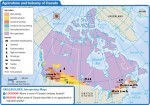
Economy and Culture of Canada
A HUMAN PERSPECTIVE The fur trade was a major economic activity in early Canada. It began in the 16th century, when Canada's Native American peoples, now known as the First Nations, started trading with European fishermen along the northern Atlantic coast. A brisk trade soon developed, and trappers and traders poured into Canada. They came […]
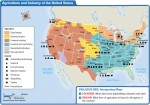
Economy and Culture of the United States
A HUMAN PERSPECTIVE The average American worker in 1790 was a self-employed farmer. The farmer spent each work day, sunrise to sunset, in backbreaking labor in the field. Most of the crops and livestock raised were consumed by the farm family. In the 1890s, the average American worker labored in a manufacturing or service industry, […]
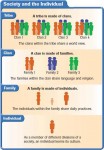
The Elements of Culture
BASICSA HUMAN PERSPECTIVE In an article titled “ The 100% American,” anthropologist Ralph Linton described how a typical American, in eating breakfast, had borrowed from other cultures. He has coffee, an Abyssinian plant, with cream and sugar. Both the domestication of cows and the idea of milking them originated in the Near East, while sugar […]
People and Culture
These lines, part of a poem written by Emma Lazarus, appear on the Statue of Liberty. They offer a very appropriate introduction to this chapter on the American population. The United States has been and continues to be a grand human experiment conducted on a colossal scale. It has often been called a “country of immigrants,” people who arrived from […]
Population, Culture Regions, and Social Institutions
Fifty million Frenchmen can't be wrong,” goes the old saying, but there are now more than sixty million French citizens in metropolitan and overseas France. They account for 16% of the European Union's population and rank France twentieth among world countries. Approximately 75% of the country's population is urban, living in towns of 2,000 or more people. This is in […]
Popular Culture
Popular culture includes all forms of social and personal expression that are widely available and highly visible. Related to the world of ordinary middle-class, working-class, and poor people, this “mass culture” differs significantly from the more formal “high” culture of privileged and well-educated people. Often mass produced and current, popular culture includes forms of music, theater, and the other […]
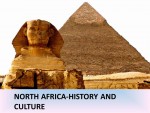
North Africa: History and Cultures
Separated from the rest of Africa by the SAHARA DESERT, the peoples of North Africa share a language and many cultural, political, and economic traditions. The term North Africa refers to the modern states of EGYPT, LIBYA, TUNISIA, ALGERIA, and MOROCCO, as well as the territory of WESTERN SAHARA. In ancient times the lands north of the Sahara and […]
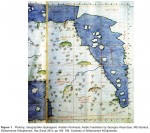
Cultures of Mapmaking
Mapmaking in Islamic societies took its themes, methods, techniques, and formats from several societies that either existed before the emergence of Islamic societies or parallel to them. The regions where these societies flourished were Greece, Egypt, Iran, India, China, Spain, Italy, the Netherlands, and France. With the shifts and changes in Europe since the sixteenth century, further European societies became relevant […]
Documents of a Material Culture
The fascination with archives and documents as cultural artifacts has arisen in geography for a number of reasons. First, digital publication software and the globalized workforce that assembles cameras, scanners, and other inexpensive mechanical reproduction technologies have enabled scholars to produce facsimiles of particular documents, such that they can then pay close attention to the form and quality of a document through […]
Cultural Ecology as a Reunion
In the wake of New Guinea, anthropologists and geographers began to rediscover common ground in what was then called cultural ecology. This approach concentrated on processes rather than material culture – subsistence, work, reproduction, and resource use – and their interrelations – as embedded in the rules and values of a particular society. The configurations could be functional, behavioral, […]
Sociocultural Animal Geographies: Identities and Place
Much of the focus of sociocultural animal geographies has been on animal roles in construction and ordering of culture and individual human subjects, and wider links between human and animal identities in particular times and places. Some animal geographies have experimentally approached animals as something akin to a marginal social group that emphasizes unequal power relations between animals and people, and […]
Early Cultural Geographies of Animals
In contrast to zoogeographical work, early twentieth century geographies of animals sought to examine how some animal distributions were affected by human groups through animal domestication and introductions of animals into new regions. Studies of animal domestication were rejuvenated by evolutionary theory in the late nineteenth and twentieth centuries – viewing animal domestication as one of the main qualities and practices that […]
Cultural Commonalities
Although the human geography of the Americas is sometimes described as diverse, in fact the peoples of this region share many common cultural characteristics. These include similar colonial histories, cultural orientation, religious traditions, political values and systems, and economic organization. With the exception of Aus tralia, the contemporary human geography of the Americas is one of the least varied in the […]
Cultural Geographies of the Sea
While contemporary studies of the political geography of the sea can draw upon a long history of political geographers studying maritime conflict, the study of marine issues is quite new in cultural geography. Of course, there always have been marine cultural geographies; seafaring and fishing communities invariably display distinct cultural formations that reflect and impact the surroundingmarine environment. Historically, […]

cultural geography
CULTURAL GEOGRAPHY IS a subdiscipline of HUMAN GEOGRAPHY. The founding father of cultural geography in North America is Carl Ortwin SAUER, and most of the research in cultural geography from the 1920s to the beginning of the 1980s was carried out by cultural geographers walking in the footsteps of Sauer and the so-called Berkeley School. […]